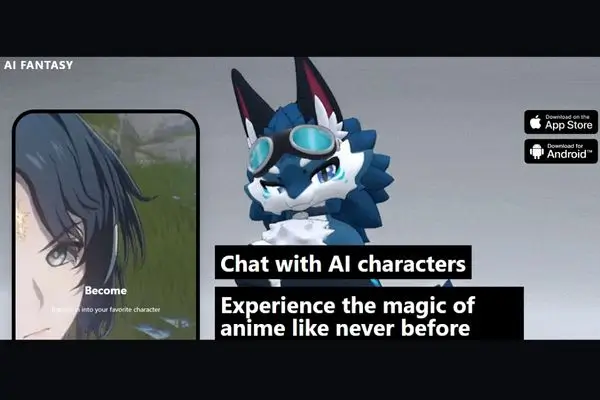Artificial Intelligence has changed the way we live, work, and create. In this Fantasy AI Review, we will discuss beyond business and technology, a new trend is rising fast — Fantasy AI. From AI-generated fantasy worlds to digital storytellers that can create epic adventures, “AI fantasy” is no longer just a dream of science fiction.
Topics
Table of Contents
In this article by hstech.io, we’ll take a deep dive into what Fantasy AI is, how it works, and why it’s attracting global attention. We’ll also share a Fantasy AI review to help you understand its potential.
What is Fantasy AI?
Fantasy AI refers to the use of artificial intelligence tools to generate, expand, and explore fantasy-based content. This can include:
- Creating fantasy art (dragons, castles, mythical heroes).
- Writing epic fantasy stories with AI assistance.
- Designing virtual fantasy worlds in gaming and VR.
- Generating characters, maps, and lore for role-playing games.
In short, Fantasy AI brings together AI-driven creativity and human imagination to produce magical experiences.
AI Fantasy vs. Fantasy AI
Although the terms sound similar, they’re often used differently:
- AI Fantasy → refers to the idea of AI itself becoming part of fantasy or myth. For example, movies, novels, or games where AI is imagined as a god, hero, or villain.
- Fantasy AI → refers to practical tools that help creators design fantasy-themed art, stories, and worlds using AI.
Both overlap, but together they show how AI is reshaping the way we dream and create.
How Fantasy AI Works
Fantasy AI uses advanced models like Generative AI (text-to-image, text-to-story, text-to-video). Here’s how it powers creativity:
- Natural Language Processing (NLP): Turn a simple text prompt (“A dragon guarding an ancient crystal”) into a complete fantasy scene or story.
- Generative Adversarial Networks (GANs): Used in AI art platforms to generate detailed fantasy images.
- Large Language Models (LLMs): Like ChatGPT, used to write novels, character backstories, and dialogue for fantasy role-playing games.
- 3D & VR AI Tools: Build immersive fantasy worlds that can be explored virtually.
Why Fantasy AI is Becoming Popular
- Accessible Creativity – You don’t have to be a professional artist or writer to create something magical.
- Personalised Worlds – AI allows gamers, readers, and creators to build their own unique universes.
- Faster Content Creation – AI speeds up the process of producing art, stories, and game environments.
- Global Appeal – Fantasy stories are universal, and AI makes them accessible across cultures and languages.

Fantasy AI Review: The Good and the Bad
Pros
- Endless creativity with just a few prompts.
- Cost-effective compared to hiring artists or writers.
- Great for indie game developers, authors, and storytellers.
- Can create multilingual fantasy worlds for global audiences.
Cons
- Risk of repetitive or cliché outputs.
- It may lack the depth and emotional touch of human storytelling.
- Ethical concerns about replacing human creators.
- Copyright and originality issues still remain unclear.
Fantasy AI in Gaming
The gaming industry is one of the biggest adopters of Fantasy AI. Imagine:
- AI is generating quest lines in real time.
- Dynamic AI-powered NPCs that adapt to your gameplay.
- Fantasy maps and levels are built instantly based on your actions.
Games are becoming more immersive and unpredictable with Fantasy AI.
Global Impact of Fantasy AI (Geo-Optimised Insight)
- Asia (Japan, South Korea, China): Leading in fantasy AI gaming and anime-inspired AI art.
- Europe: Fantasy literature combined with AI-powered storytelling is gaining traction.
- North America: Big push in VR + AI fantasy worlds for both entertainment and education.
- Middle East & South Asia: AI fantasy themes are merging with folklore and mythology for a unique cultural twist.
Future of AI Fantasy
Fantasy AI is still in its early stages, but it’s growing fast. Soon, we may see:
- AI-generated fantasy movies written and animated entirely by machines.
- Personalised fantasy novels created for each reader.
- Fantasy-based AI influencers on social media.
This shows that AI fantasy isn’t just a tool — it’s becoming a culture.
FAQs About Fantasy AI
Q1. What is Fantasy AI used for?
Fantasy AI is used for generating fantasy art, stories, and worlds for gaming, literature, and VR.
Q2. Can AI really replace fantasy writers and artists?
Not fully. AI can assist and speed up the creative process, but human imagination is still key for originality and depth.
Q3. What’s the difference between AI fantasy and Fantasy AI?
AI fantasy refers to the fictional idea of AI in myths/stories, while Fantasy AI is about using AI tools to create fantasy content.
See Also: Intro to Agentic AI: 7 Easy Steps to Understanding and Learning
Conclusion
The rise of Fantasy AI shows how technology and imagination are blending like never before. Whether you’re a writer, gamer, or just a fan of fantasy worlds, AI is opening new doors to creativity.
Our Fantasy AI review proves that it’s exciting, powerful, and global — but still requires careful use to protect originality.
One thing is clear: The future of AI fantasy isn’t just about machines — it’s about humans and AI creating magical worlds too.
What is Bachelor’s of Science
Pingback: iOS 26: Apple’s Bold Redesign, Release Date, and Everything You Need to Know